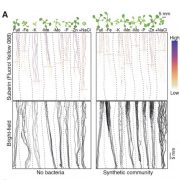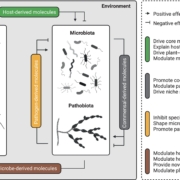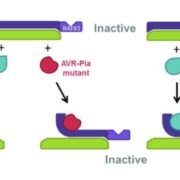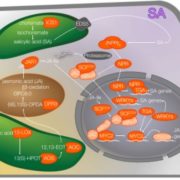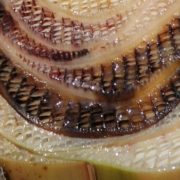Review: Balancing immunity and yield in crop plants
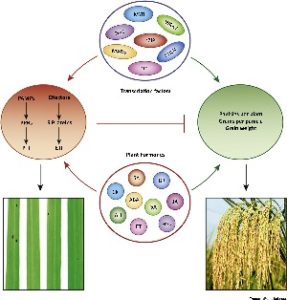 During pathogen invasion, plant resources are diverted from further growth to activation of plant immune response. This review focuses on the recent advances in understanding the complex relationship between immunity regulation and yield production in the model monocot crop rice (Oryza sativa). Many defense-response hormone signaling pathways are discussed, including salicylic acid (SA), brassinosteroid, jasmonates, ethylene, gibberellic acid (GA), abscisic acid, and auxin. In rice, SA signaling interferes with the auxin pathway, leading to enhanced resistance to a bacterial blight pathogen at the expense of plant growth. JA balances activation of pathogen resistance versus rice spikelet development, as seen during plant shade avoidance response. Both SA and JA pathways can be integrated by Slender Rice1 (SLR1) but SLR1 is degraded by upregulation of the growth hormone GA. Just as these examples show the complexity and competition between plant defense hormones and plant growth hormones, transcription factors (TF) also act to regulate plant growth versus plant immunity. By optimizing TF gene expression, an optimal balance between these competing factors can be achieved and may serve as a target for future breeding strategies. On the other hand, less is known about the regulation of resistance genes and the interaction between their subsequent protein products in rice, but work in Arabidopsis shows promise of alleviating the fitness costs associated with their expression. (Summary by Alecia Biel) Trends Plant Sci. 10.1016/j.tplant.2017.09.010.
During pathogen invasion, plant resources are diverted from further growth to activation of plant immune response. This review focuses on the recent advances in understanding the complex relationship between immunity regulation and yield production in the model monocot crop rice (Oryza sativa). Many defense-response hormone signaling pathways are discussed, including salicylic acid (SA), brassinosteroid, jasmonates, ethylene, gibberellic acid (GA), abscisic acid, and auxin. In rice, SA signaling interferes with the auxin pathway, leading to enhanced resistance to a bacterial blight pathogen at the expense of plant growth. JA balances activation of pathogen resistance versus rice spikelet development, as seen during plant shade avoidance response. Both SA and JA pathways can be integrated by Slender Rice1 (SLR1) but SLR1 is degraded by upregulation of the growth hormone GA. Just as these examples show the complexity and competition between plant defense hormones and plant growth hormones, transcription factors (TF) also act to regulate plant growth versus plant immunity. By optimizing TF gene expression, an optimal balance between these competing factors can be achieved and may serve as a target for future breeding strategies. On the other hand, less is known about the regulation of resistance genes and the interaction between their subsequent protein products in rice, but work in Arabidopsis shows promise of alleviating the fitness costs associated with their expression. (Summary by Alecia Biel) Trends Plant Sci. 10.1016/j.tplant.2017.09.010.


